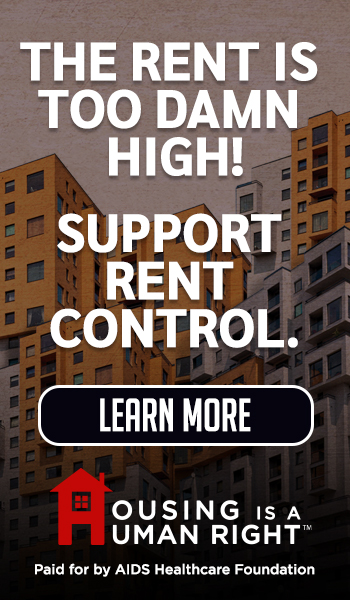Comments
THE VIEW FROM HERE - The vacancy rate in Central DTLA for late 2024 and 2025 is between 29.1% and 32.6%. The poster child for DTLA vacancies is Graffiti Towers, aka Park Hyatt’s portion of Oceanwide Plaza. If one reads the View from the Wing, which is typical of business explanations for the fiasco, one learns that the project allegedly got caught up in the US China Trade war, i.e., Trump’s 2025 tariffs, but construction had stopped 6 years earlier in 2019 when the project ran out of money and could not refi $1.2 billion. Developers give similar foolish explanations for the project’s stopping; it was Covid, forgetting that Covid did not hit until March of 2020. In 2025, LA Times blames high interest rates in 2019 which were only 4% 5%. Today, they are 6.28% to 6.39%.
According to Rick Caruso, famous LA builder and 2022 mayoral candidate, during his Sunday, October 14, 2025, interview on Channel 4's NewsConference, the vacancy in some towers is close to 50%. For years, it was known that LA population increase rate was dropping and soon there would be a net loss of people. Within a few years, LA lost so many people that during the 2020 Census, the State of California lost one seat in the US House of Representatives.
As Density Increases, Value of Land Increases
Land with a two-story building with 20 offices is worth less than with a 30 story high rise with 300 offices. For residential areas, a single-family home where the zoning is strictly R-1 is worth less than where the zoning allows multiple units plus retail space. If, however, a finished project like many DTLA high rises has 30% or 50% vacancy rate, then the high-density rate becomes a liability. With only a fraction of the offices filled, the rents drop. Not only because many units provide no income, but many empty units reduce the amount other tenants will pay; they realize the developer is desperate. Whenever there is a glut on the mart, the price per unit drops. A high vacancy rate means the builder cannot repay his loan, e.g., Graffiti Towers. When a parcel of real estate becomes worth less, the owner petitions for reduced property taxes, which reduces the county’s and the city’s incomes.
As predicted but the city ignored, when family millennials could not afford single family homes, they moved out of LA, and as families left, businesses also departed. In 1990, LA city and nearby areas had sixteen Fortune 500 companies. In 2025, we had only seven Fortune 500 companies, only one which was actually in the City of Los Angeles. Our GINI factor in 1990 was 0.4288, but by 2024, the GINI factor was 0.566. In other words, income inequality became significantly worse as Family Millennials left so that the percentage of the less educated and less skilled people was growing.
Less Property Tax Income Leads to City Bankruptcy
Los Angeles is addicted to construction dollars like a narcodrug state depends on opium production. LA’s problem is that land, unlike Fentanyl, cannot be exported to garner income. The city’s income depends on high property taxes. High property tax income requires full occupancy of office space which depends on a large, well educated population. The lack of reasonably priced single-family homes, however, means a population exodus of the most valuable population segment – young families. They buy homes to build equity and tend to stay for decades, giving real estate stability.
SB 79 Comes to the Rescue – If You’re an Idiot!
The Woke backers of SB 79 hate single family residences claiming that they are a plot to keep Blacks poor. Developers discovered that when they destroyed Rental Controlled Units (RSO’s) in the Basin where crime was high, people did not want to rent. Also, each RSO unit which was replaced by a market rate unit created fewer apartments of the poor, while adding excess density to high end projects. As a result, LA had a Homeless Crisis and a glut of high-end units, especially in undesirable neighborhoods.
Then, developers told themselves that if they could build in low crime, R-1 areas, family millennials would stay in the city. Two flaws: (1) family millennials hated apartments and moved to other states get detached homes with yards and decent traffic, and (2) There was heavy resistance to constructing poverty projects in R-1 areas. Thus, the SB 79 solution was to allow developers to construct in low crime, R-1 areas which are within 1/4 to ½ mile of a mass transit line.
Producing any Produce Which Consumers Hate Is Not Smart
Because private developers must repay their private construction loans, only an idiot would build a project which the buyers will hate. That is why the Wokers propose Affordable Housing under SB 79. The government will pay $1M to per unit and then give section 8 for tenants. The more Affordable Units, the greater the government subsidy.
Because our GINI has reached 0.566, the percentage of poor people is increasing. Thus, developers turn to public financing, and selling bonds is the city’s favorite way to raise money. The fly in the ointment is getting voters to approve more bonds to construct SB 79 Affordable Housing. Here’s where the city will employ one of Garcetti’s tricks -- make the homeless more visible with a high crime rate. Then, claim that a housing shortage causes homelessness, which will be solved by constructing more Poverty Projects, i.e., Affordable Housing.
As Garcetti proved, the more troublesome homeless become, the more readily voters will approve billions of dollars in bonds to pay for Affordable Housing. Remember the 2016 Measures HHH and JJJ? In 2016, the City had 22,887 homeless, but four years later, it had over 36,000 homeless. Will Angelenos fall for this multi-billion-dollar scam once again?
When the city uses bond money to make loans to developers, the developers should repay the loans. Outrage over Homelessness will cause the city to take out insane loans for SB 79 poverty projects. Going back to CRA days, the City allows developers to default on their loans so that the city has to repay Wall Street. That way, LA economy is temporarily buoyed by influx the construction dollars, while the city moves closer to long term bankruptcy.
(Richard Lee Abrams is a former Los Angeles-based attorney, an author, and political commentator. A long-time contributor to CityWatchLA, he is known for his incisive critiques of City Hall and judicial corruption, as well as his analysis of political and constitutional issues. Abrams blends legal insight with historical and philosophical depth to challenge conventional narratives. A passionate defender of civic integrity and transparency, he aims to expose misuse of power and advocate for systemic reform in local government. You may email him at [email protected]. The opinions expressed by the author are not necessarily those of CityWatchLA.)















